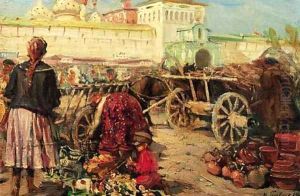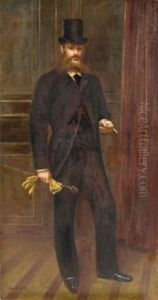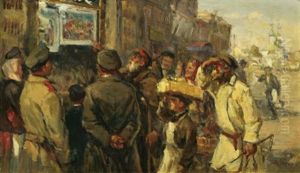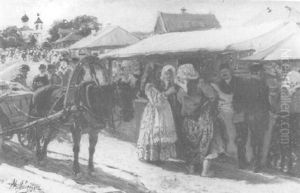Mikhail Petrovich Botkin Paintings
Mikhail Petrovich Botkin was a significant figure in the Russian art world during the second half of the 19th century and the early 20th century. Born on August 16, 1839, in Moscow, Russia, into an affluent family, Botkin was raised in an environment that was conducive to his development as an art connoisseur and patron. He was the brother of the famous Russian physician Sergey Botkin. Despite his family's expectations that he would pursue a career in medicine or the sciences, Botkin was drawn to the arts from an early age.
Botkin's contributions to the art world were not as an artist himself, but as a collector, patron, and facilitator of the arts. He amassed a substantial collection of paintings, which included works by prominent Western European artists as well as Russian artists. His collection was renowned for its quality and diversity, featuring a range of styles and periods. Botkin was particularly interested in the works of the Wanderers (Peredvizhniki), a group of Russian realist artists who formed an artists' cooperative in protest against the restrictions of the academic system of art.
In addition to his collecting activities, Botkin played a vital role in the Russian art scene by supporting artists financially and organizing exhibitions. He was known for his generosity and his commitment to the development of Russian art. His home in Moscow became a cultural salon where artists, writers, and intellectuals gathered to discuss ideas and share their work.
Botkin's dedication to art also extended to philanthropic efforts. He was instrumental in founding several art societies and museums, and he contributed to the establishment of educational programs aimed at nurturing new talent and expanding the appreciation of art in Russia.
Mikhail Petrovich Botkin passed away on January 12, 1914. After his death, his art collection was inherited by his family and eventually became part of museum collections in Russia. His legacy as a patron and lover of the arts continues to be remembered and celebrated for the vital role he played in the cultural life of his time.



